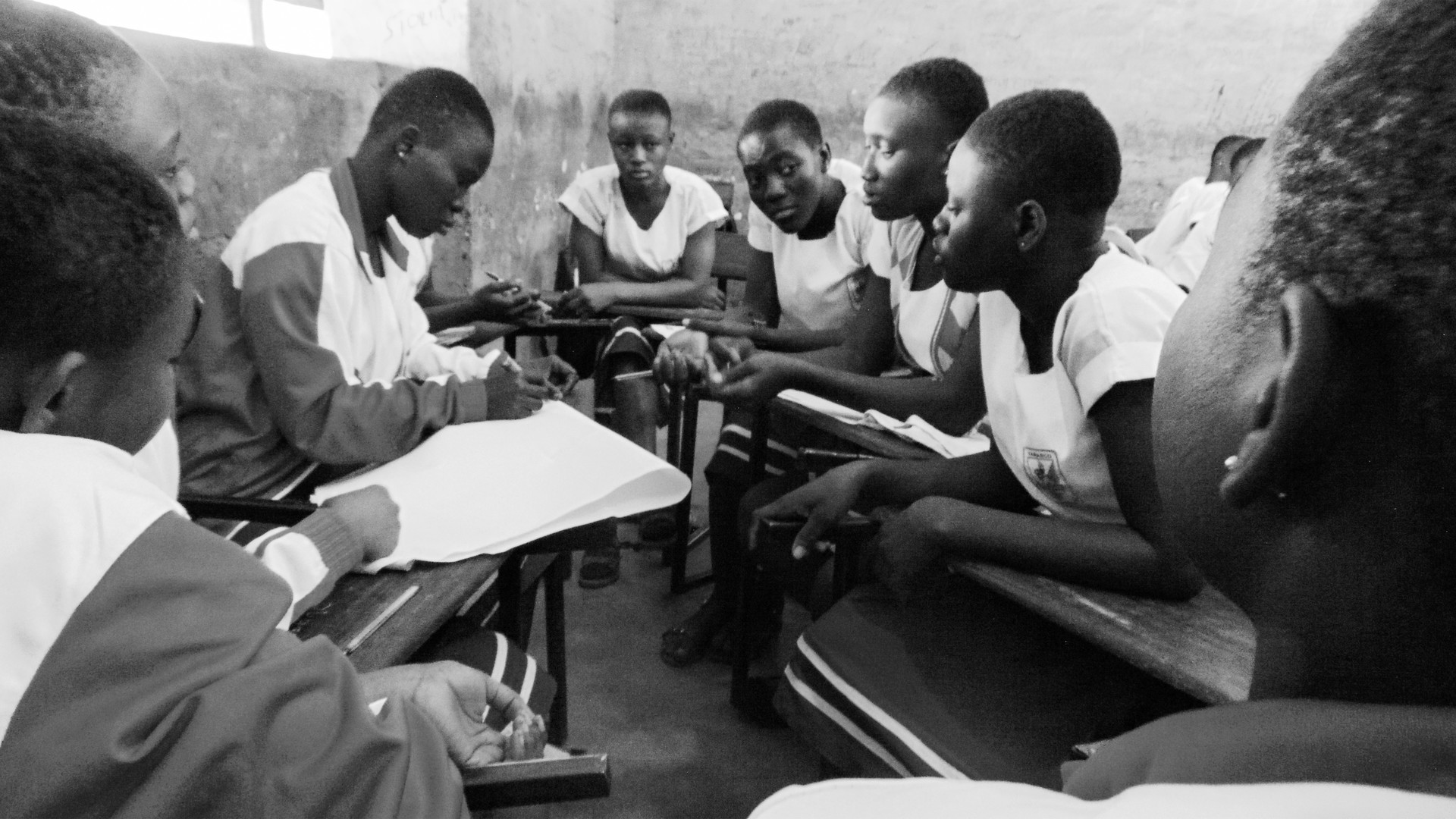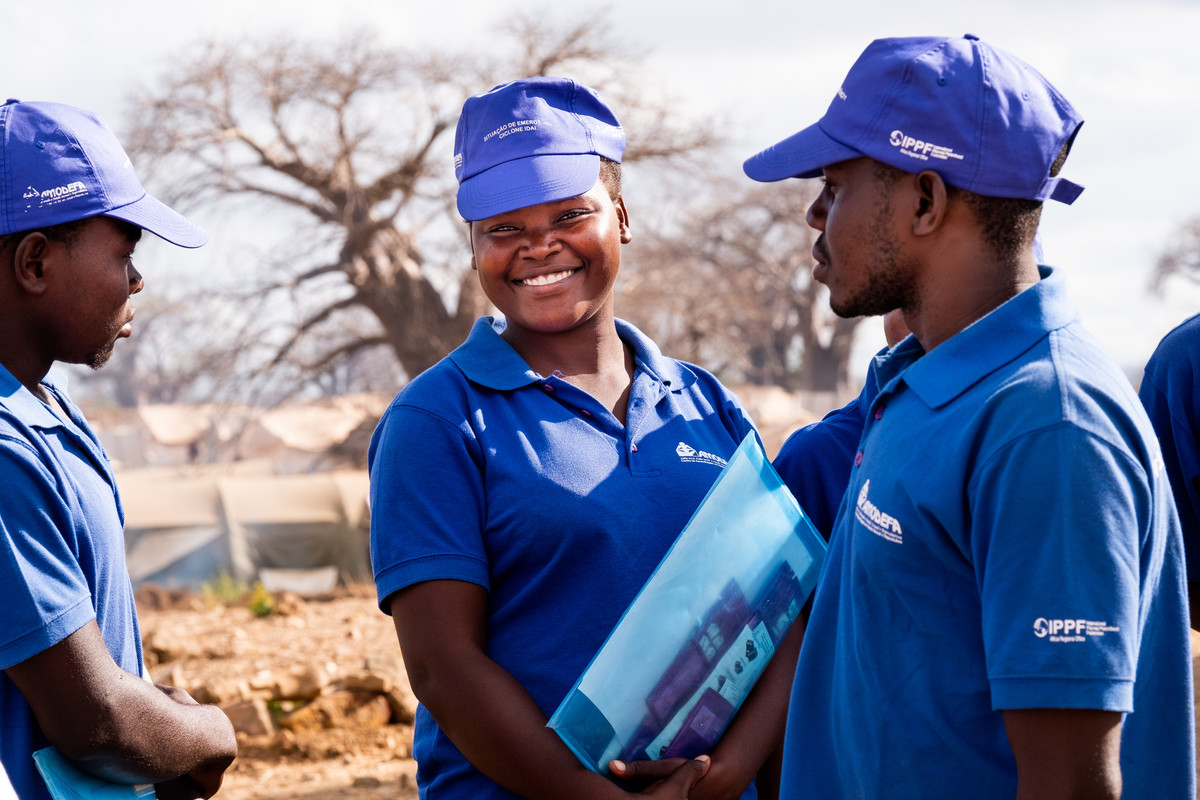Spotlight
A selection of stories from across the Federation
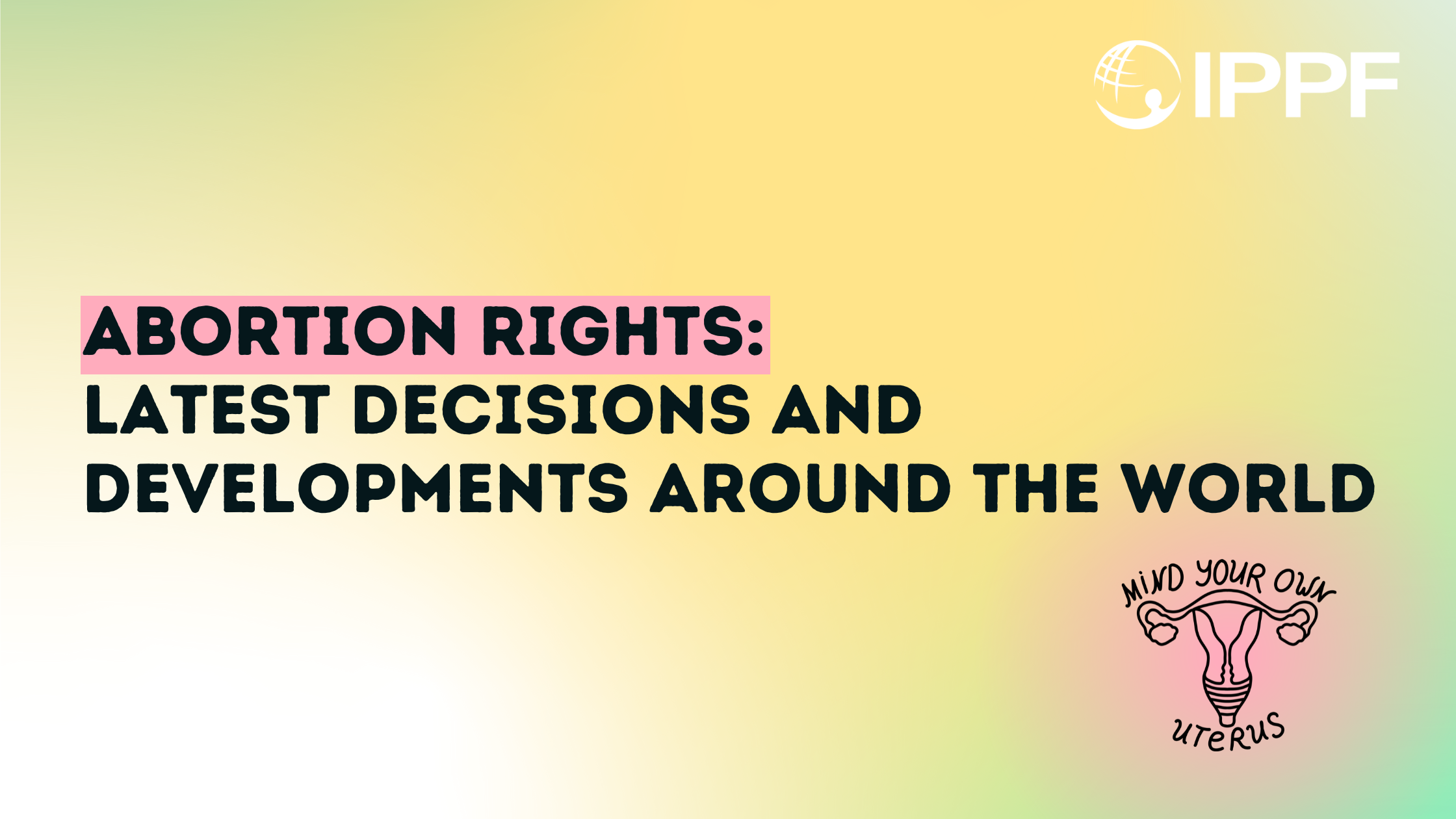
France, Germany, Poland, United Kingdom, United States, Colombia, India, Tunisia
Abortion Rights: Latest Decisions and Developments around the World
The global landscape of abortion rights continues to evolve in 2024, with new legislation and feminist movements fighting for better access. Let's take a trip around the world to see the latest developments.
Most Popular This Week
France, Germany, Poland, United Kingdom, United States, Colombia, India, Tunisia

Abortion Rights: Latest Decisions and Developments around the World
Over the past 30 years, more than
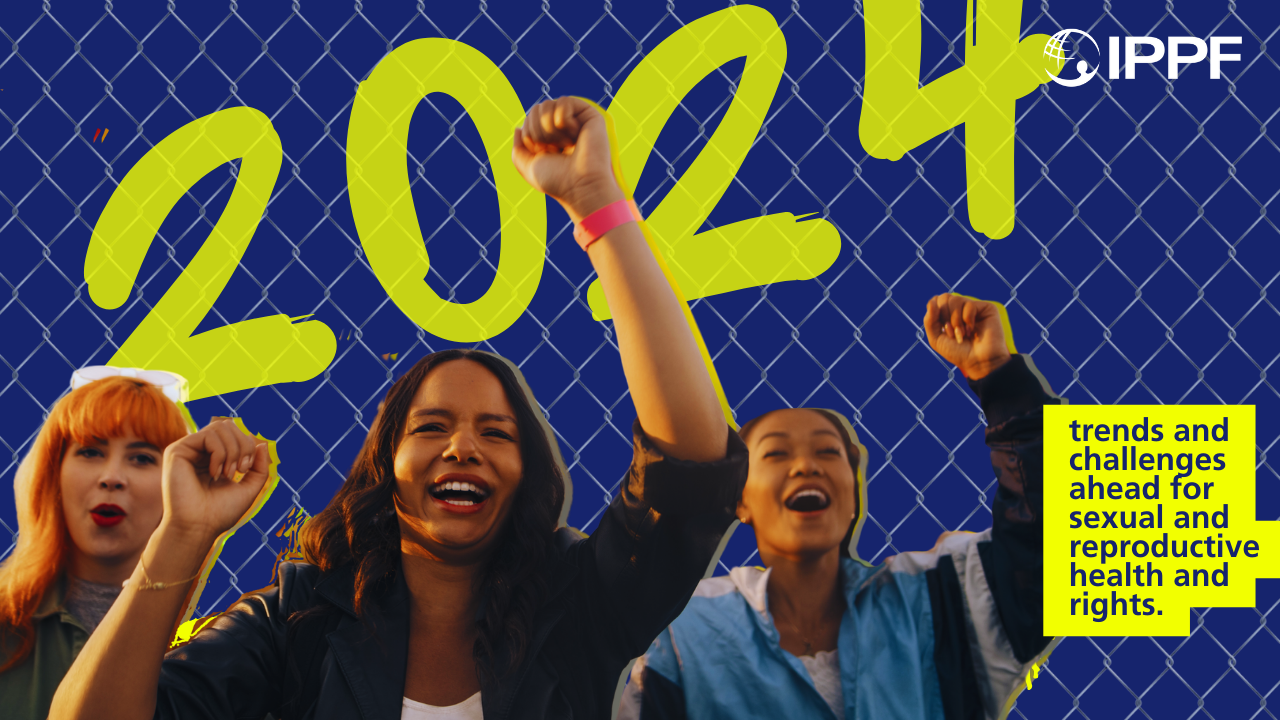
Palestine
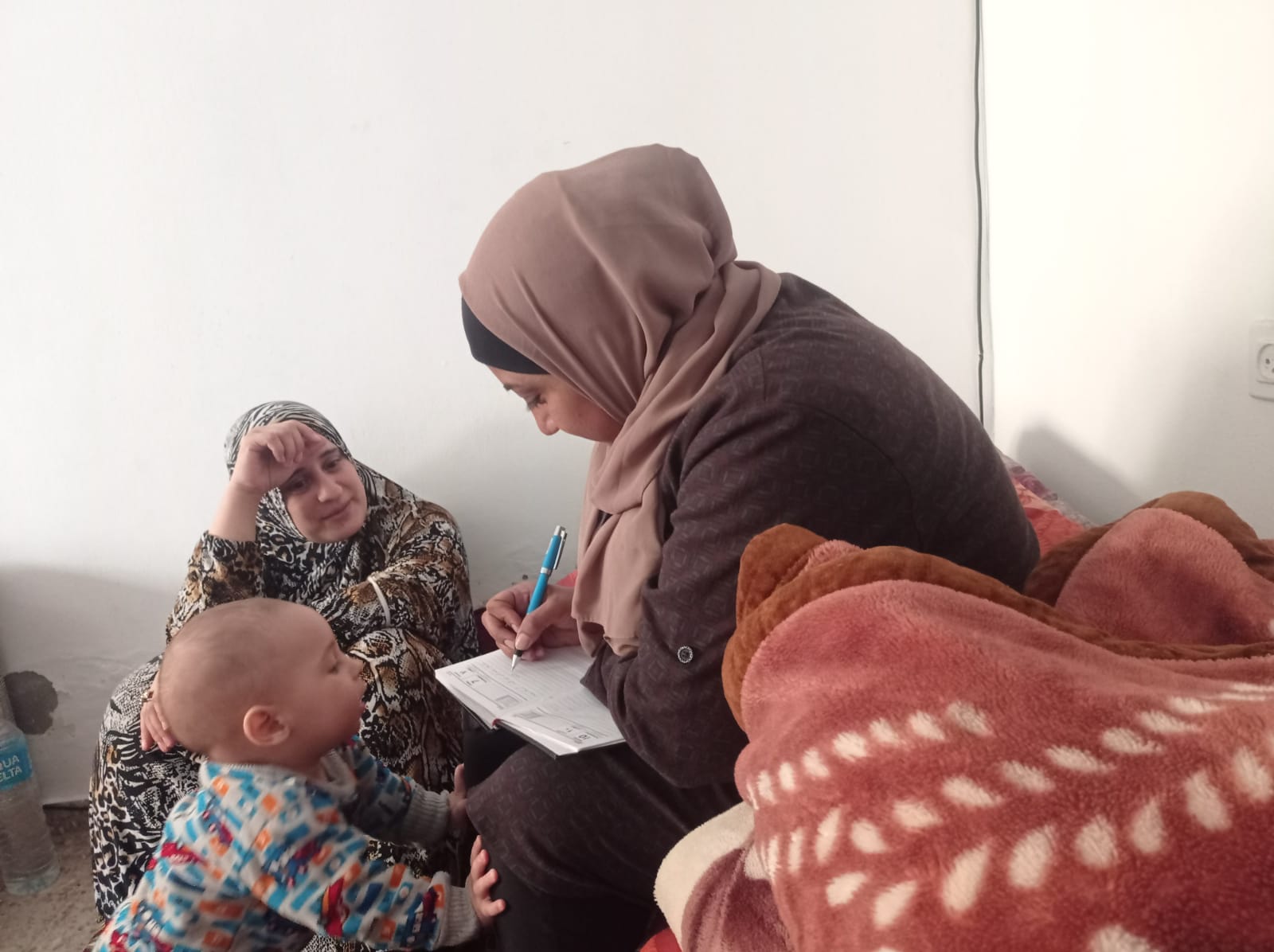
In their own words: The people providing sexual and reproductive health care under bombardment in Gaza
Week after week, heavy Israeli bombardment from air, land, and sea, has continued across most of the Gaza Strip.
Vanuatu
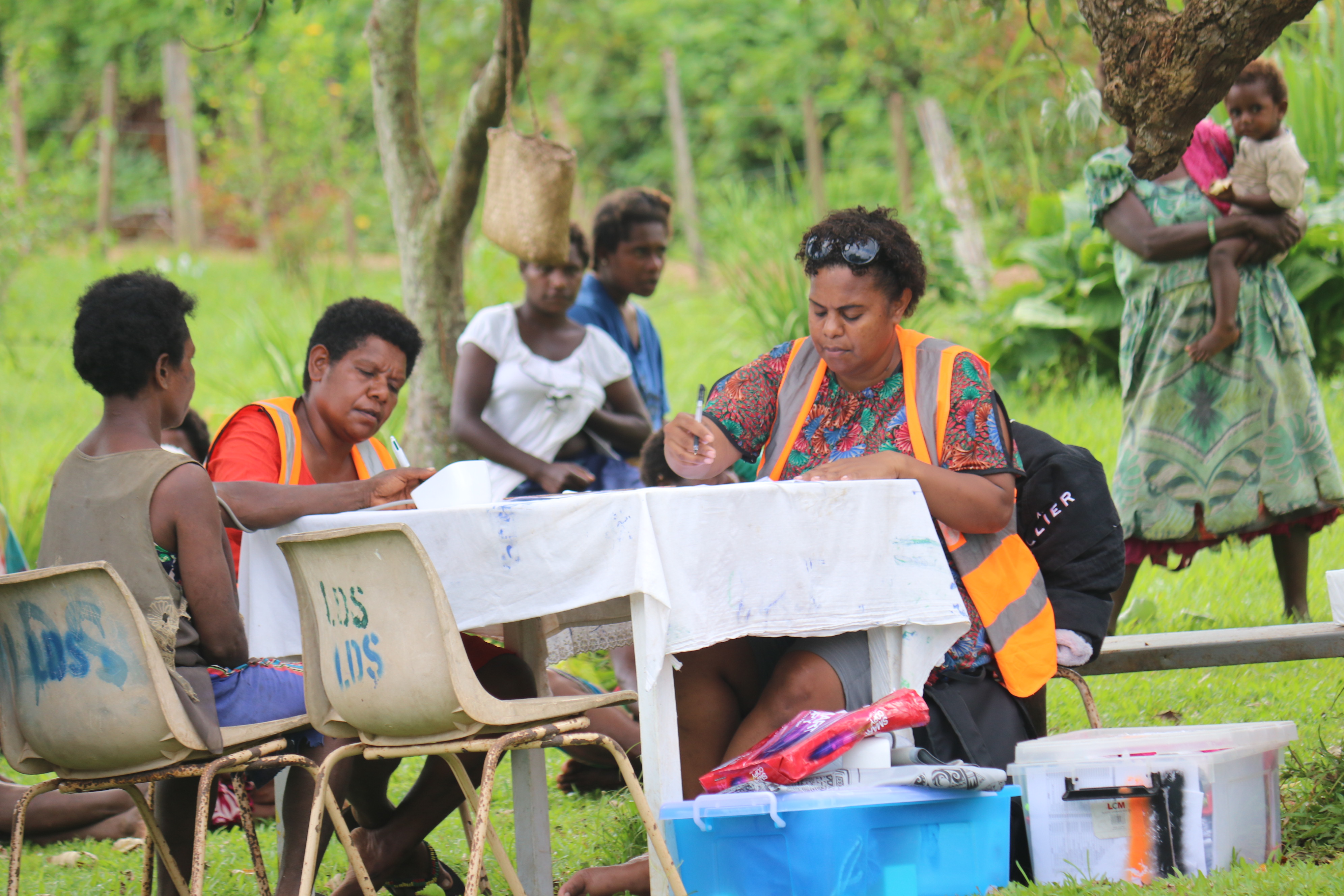
When getting to the hospital is difficult, Vanuatu mobile outreach can save lives
In the mountains of Kumera on Tanna Island, Vanuatu, the village women of Kamahaul normally spend over 10,000 Vatu ($83 USD) to travel to the nearest hospital.
Vanuatu

Sex: changing minds and winning hearts in Tanna, Vanuatu
“Very traditional.” These two words are often used to describe the people of Tanna in Vanuatu, one of the most populated islands in the small country in the Pacific.
Vanuatu
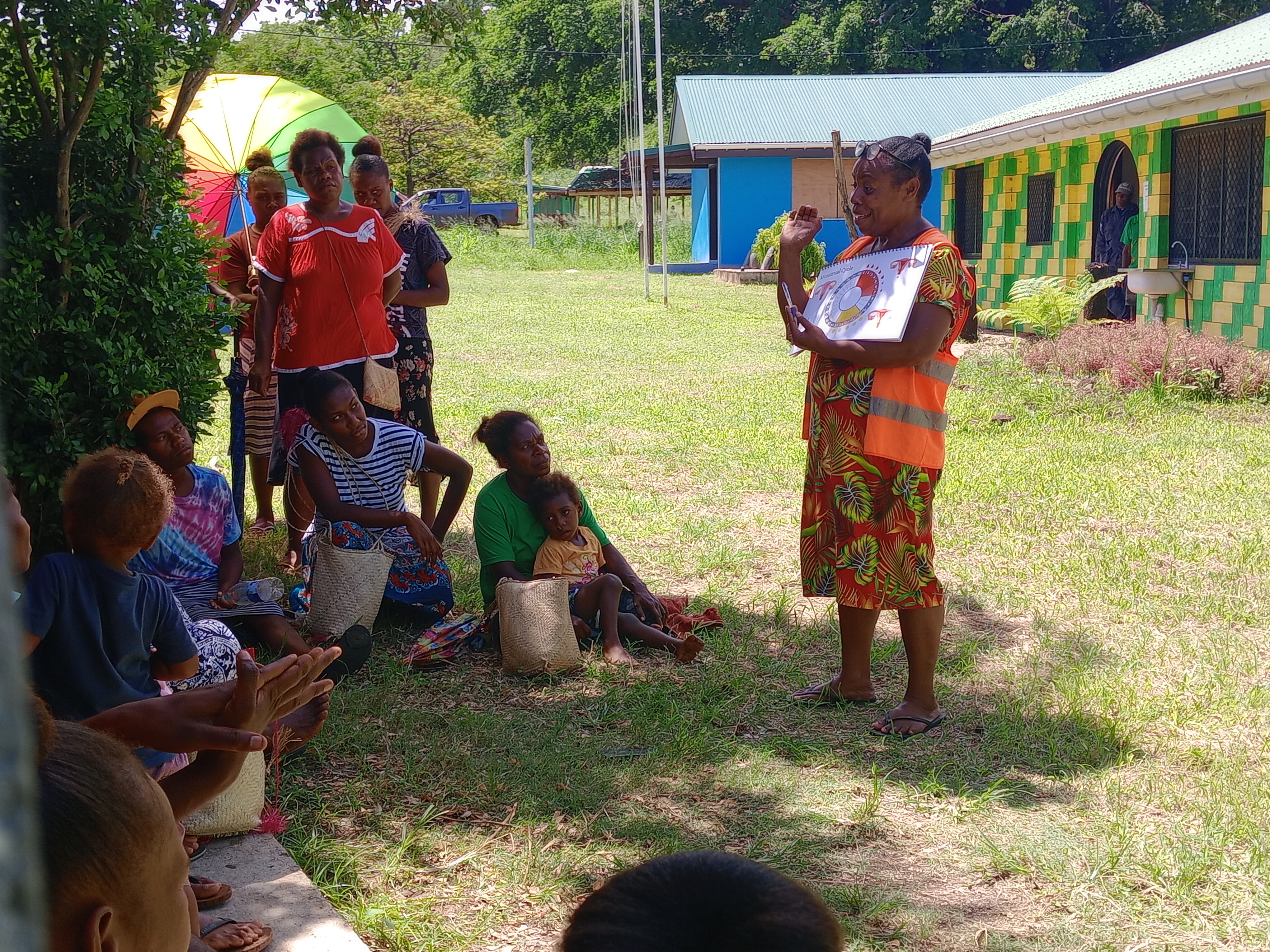
Vanuatu cyclone response: The mental health toll on humanitarian providers
Girls and women from nearby villages flock to mobile health clinics set up by the Vanuatu Family Health Association (VFHA).
Cook Islands

Trans & Proud: Being Transgender in the Cook Islands
It’s a scene like many others around the world: a loving family pour over childhood photos, giggling and reminiscing about the memories.
Cook Islands
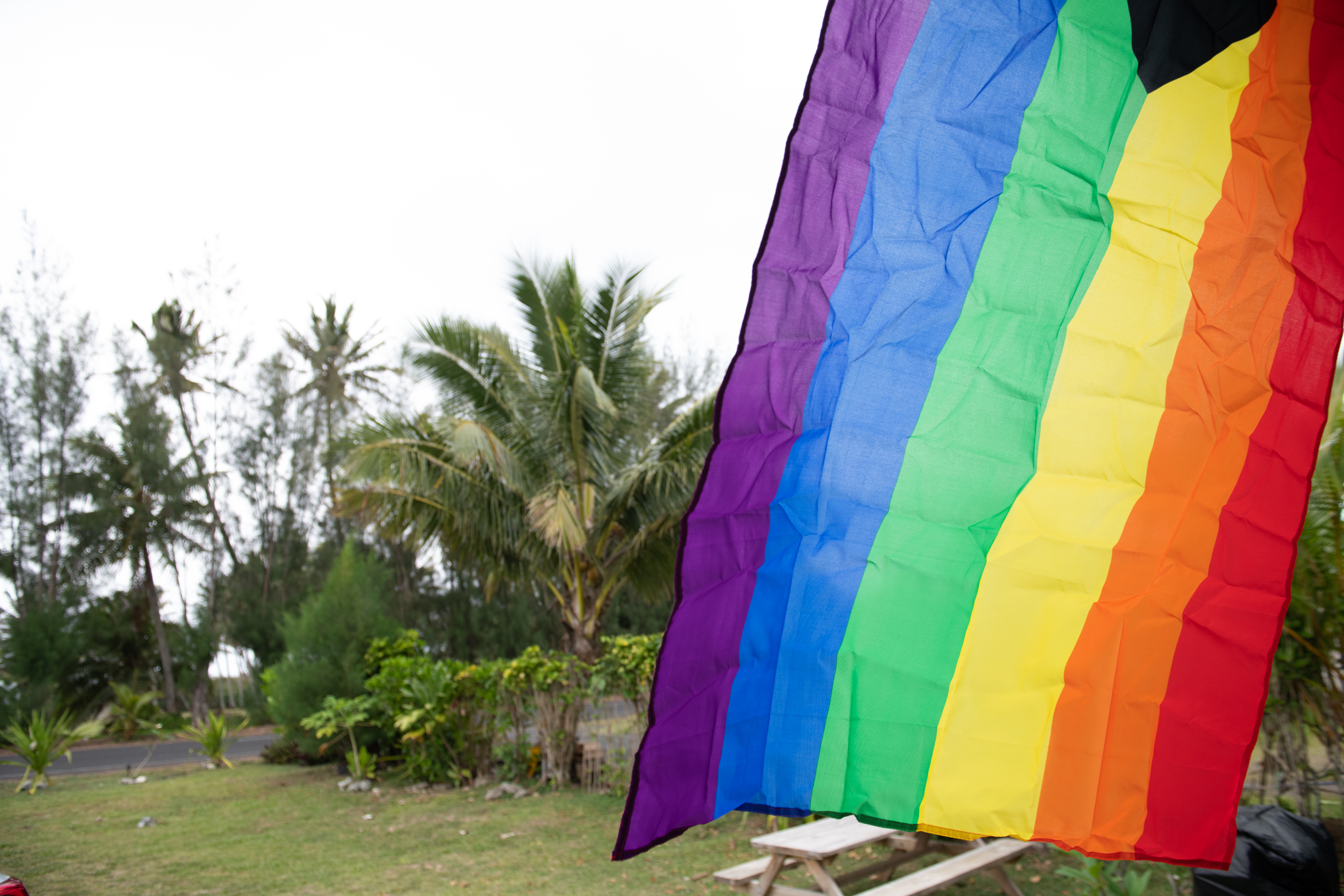
In Pictures: The activists who helped win LGBTI+ rights in the Cook Islands
The Cook Islands has removed a law that criminalizes homosexuality, in a huge victory for the local LGBTI+ community.
Filter our stories by:
- Associação Moçambicana para Desenvolvimento da Família
- Association Togolaise pour le Bien-Etre Familial
- Family Guidance Association of Ethiopia
- Family Planning Association of Malawi
- Family Planning Association of Nepal
- Family Planning Association of Sri Lanka
- Foundation for the Promotion of Responsible Parenthood - Aruba
- Indonesian Planned Parenthood Association
- Jamaica Family Planning Association
- Kiribati Family Health Association
- Lesotho Planned Parenthood Association
- Planned Parenthood Association of Ghana
- Planned Parenthood Federation of Nigeria
- Reproductive & Family Health Association of Fiji
- Reproductive Health Association of Cambodia (RHAC)
- Reproductive Health Uganda
- Vanuatu Family Health Association
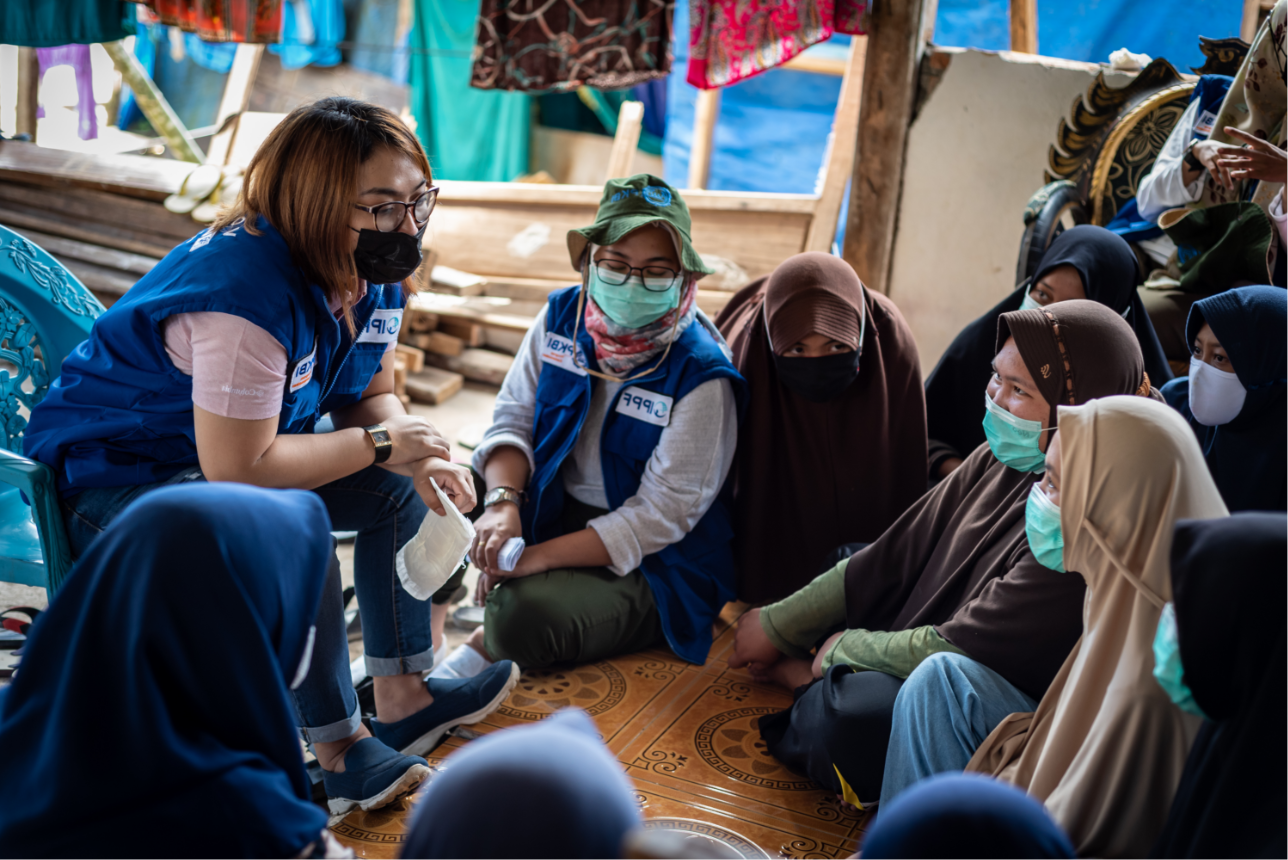

| 16 November 2017
“I was very happy when my daughter was born”
After three years of marriage, Cambodian garment worker Sineang had started to wonder why she hadn’t yet become pregnant. Still in her early 20s, she and her husband wanted to have a baby and were not using contraception. In late 2011 or early 2012, Sineang visited a Reproductive Health Association of Cambodia clinic to seek treatment after she noticed some vaginal discharge. During the appointment, her doctor asked her more details about her sexual and reproductive health history: the issue of infertility soon came up. “I had been wanting to have a child for three years, since I was married,” she says. “I felt down about myself, but my husband gave me encouragement and told me it was okay that I was not pregnant yet.” During the initial examination, Sineang says, she was tested for cervical cancer as well as other reproductive health issues that can interfere with pregnancy. RHAC staff prescribed medication to treat her fertility problems, which she continued taking until they confirmed she was pregnant. “At first, I wasn’t really convinced that there was any relation between the discharge and not having a baby, but later I started to think that there was a connection,” she says. Throughout the whole period, Sineang went to RHAC each month – switching from infertility treatment to prenatal care – until she gave birth to a baby girl in 2013. “I was very happy when my daughter was born,” she says. “She’s healthy.” At the time, RHAC offered a discount to garment workers, which Sineang says was a big help. It’s no longer on offer, but she is an enthusiastic supporter of a plan RHAC is hoping to implement soon – a partnership with the National Social Security Fund that would allow them to visit RHAC clinics for free through the fund. “It would be really great if they could, because having a baby is expensive,” she says. “The clinic at RHAC has better service than the public hospitals. When I had my first baby, I wanted to have good service, because I had this problem with discharge [in the past].” Sineang, who is originally from Kandal province and works at Dewhirst garment factory in Phnom Penh, said she was pleased to see RHAC midwives doing regular outreach sessions at the factory. “It’s good for women to know more about these issues,” she says. And not only that, but Sineang is also an active ambassador for RHAC, spreading the word about the NGO’s services to friends and colleagues who have also struggled to have a baby. “I referred a friend to RHAC after she saw that I finally got pregnant. Now my friend, who didn’t have a baby, has two children,” she says. “I also referred another colleague who is having the same problem, and she is going to go on Sunday.”

| 19 April 2024
“I was very happy when my daughter was born”
After three years of marriage, Cambodian garment worker Sineang had started to wonder why she hadn’t yet become pregnant. Still in her early 20s, she and her husband wanted to have a baby and were not using contraception. In late 2011 or early 2012, Sineang visited a Reproductive Health Association of Cambodia clinic to seek treatment after she noticed some vaginal discharge. During the appointment, her doctor asked her more details about her sexual and reproductive health history: the issue of infertility soon came up. “I had been wanting to have a child for three years, since I was married,” she says. “I felt down about myself, but my husband gave me encouragement and told me it was okay that I was not pregnant yet.” During the initial examination, Sineang says, she was tested for cervical cancer as well as other reproductive health issues that can interfere with pregnancy. RHAC staff prescribed medication to treat her fertility problems, which she continued taking until they confirmed she was pregnant. “At first, I wasn’t really convinced that there was any relation between the discharge and not having a baby, but later I started to think that there was a connection,” she says. Throughout the whole period, Sineang went to RHAC each month – switching from infertility treatment to prenatal care – until she gave birth to a baby girl in 2013. “I was very happy when my daughter was born,” she says. “She’s healthy.” At the time, RHAC offered a discount to garment workers, which Sineang says was a big help. It’s no longer on offer, but she is an enthusiastic supporter of a plan RHAC is hoping to implement soon – a partnership with the National Social Security Fund that would allow them to visit RHAC clinics for free through the fund. “It would be really great if they could, because having a baby is expensive,” she says. “The clinic at RHAC has better service than the public hospitals. When I had my first baby, I wanted to have good service, because I had this problem with discharge [in the past].” Sineang, who is originally from Kandal province and works at Dewhirst garment factory in Phnom Penh, said she was pleased to see RHAC midwives doing regular outreach sessions at the factory. “It’s good for women to know more about these issues,” she says. And not only that, but Sineang is also an active ambassador for RHAC, spreading the word about the NGO’s services to friends and colleagues who have also struggled to have a baby. “I referred a friend to RHAC after she saw that I finally got pregnant. Now my friend, who didn’t have a baby, has two children,” she says. “I also referred another colleague who is having the same problem, and she is going to go on Sunday.”
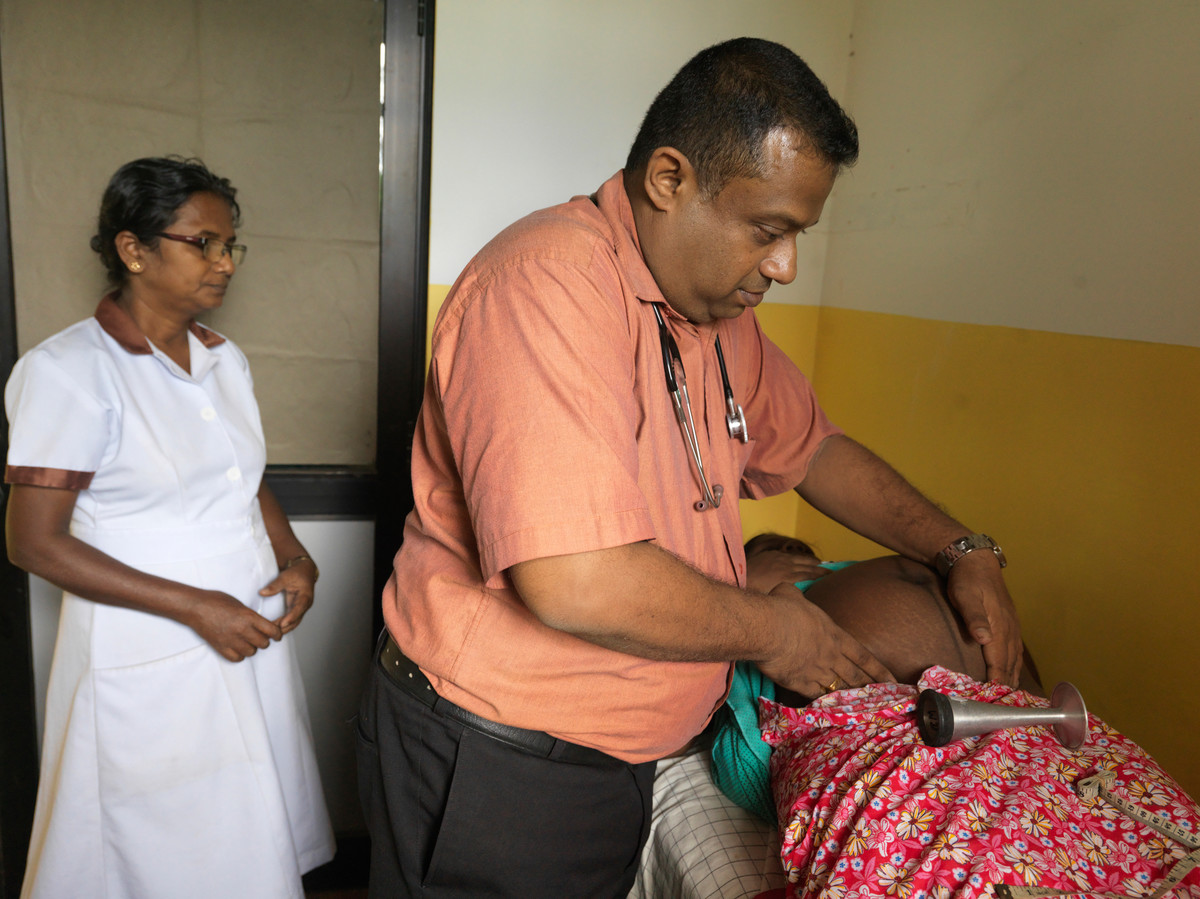
| 24 August 2017
"One pregnant woman was delivering at this time, so she had to go on a boat to dry land"
Incessant rains across Sri Lanka during May 2017 affected over half a million people in seven districts. Most affected was the Ratnapura district where over 20,000 people faced flash floods, and where 46 deaths were reported. IPPF Humanitarian, in partnership with FPA Sri Lanka, responded to this catastrophe through the distribution of over 700 dignity kits in Ratnapura Dr. Rohan Jayasuriya and midwife Chaturika Lakmale were on the ground during and after the floods providing family planning services and contraception to women affected by the disaster. “When the floods came our clinic was located on higher ground, so it wasn’t damaged. The floods finished on the 31 May 2017, and we reopened one day later on the 1 June 2017. After the floods, we arranged several special clinics just for family planning, and distributed condoms and emergency supplies of the pill to camps in case women missed their regular form of contraception like injectables, implants or IUDs. In Sri Lanka, approximately 67% of couples use family planning, 26% of which prefer IUDs” We offered condoms and emergency supply of the pill. We told women to keep one packet of the pill in their handbag, and one in their home, should they ever have to run quickly in an emergency. One pregnant woman was delivering at this time, so she had to go on a boat to dry land, and then onwards in a vehicle to the hospital. Once we reopened the clinic, two of our own midwives were unable to attend work as the floods had affected them, but I was here. It was so busy.” Stories Read more stories from Sri Lanka

| 19 April 2024
"One pregnant woman was delivering at this time, so she had to go on a boat to dry land"
Incessant rains across Sri Lanka during May 2017 affected over half a million people in seven districts. Most affected was the Ratnapura district where over 20,000 people faced flash floods, and where 46 deaths were reported. IPPF Humanitarian, in partnership with FPA Sri Lanka, responded to this catastrophe through the distribution of over 700 dignity kits in Ratnapura Dr. Rohan Jayasuriya and midwife Chaturika Lakmale were on the ground during and after the floods providing family planning services and contraception to women affected by the disaster. “When the floods came our clinic was located on higher ground, so it wasn’t damaged. The floods finished on the 31 May 2017, and we reopened one day later on the 1 June 2017. After the floods, we arranged several special clinics just for family planning, and distributed condoms and emergency supplies of the pill to camps in case women missed their regular form of contraception like injectables, implants or IUDs. In Sri Lanka, approximately 67% of couples use family planning, 26% of which prefer IUDs” We offered condoms and emergency supply of the pill. We told women to keep one packet of the pill in their handbag, and one in their home, should they ever have to run quickly in an emergency. One pregnant woman was delivering at this time, so she had to go on a boat to dry land, and then onwards in a vehicle to the hospital. Once we reopened the clinic, two of our own midwives were unable to attend work as the floods had affected them, but I was here. It was so busy.” Stories Read more stories from Sri Lanka
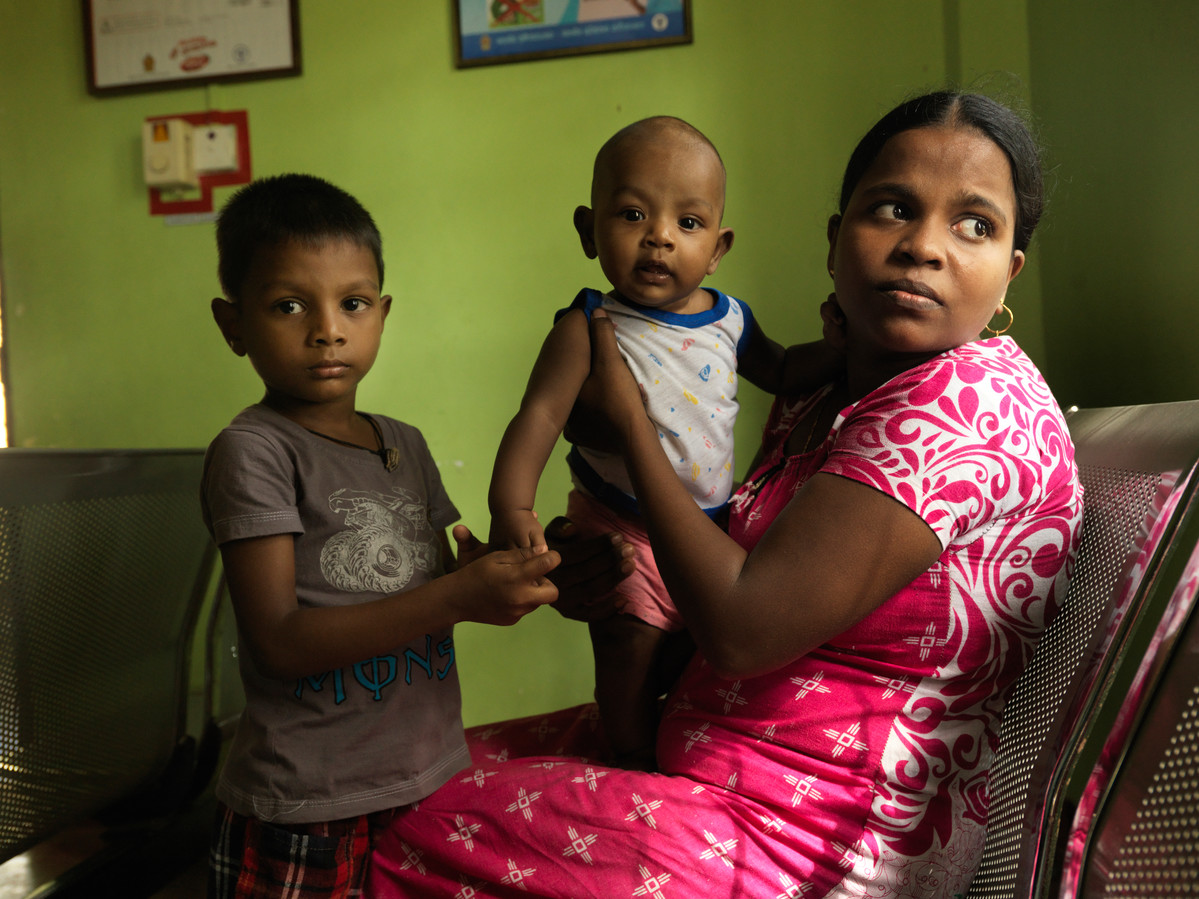
| 24 August 2017
"I looked up and saw trees falling near my neighbour’s house up the hill. My neighbours died"
Incessant rains across Sri Lanka during May 2017 affected over half a million people in seven districts. Most affected was the Ratnapura district where over 20,000 people faced flash floods. “When the flood came, my husband was feeding my eldest child and the baby was asleep in the bed. I was outside of the house. My mother was brushing her teeth outside the back of the house. I looked up and saw trees falling near my neighbour’s house up the hill. My neighbours died. I couldn’t take any possessions – I just had to run for my life. My husband took my younger child. They were all screaming. Since then, I have had my children checked here in the Ministry of Health clinic; their weight, height and nutrition. We had two houses on the one block of land, but we will only get compensation for one house. We can’t live in a tent with a baby so are currently renting a house with our own money, but for a while my mother and father slept in this clinic.” Stories Read more stories from Sri Lanka

| 19 April 2024
"I looked up and saw trees falling near my neighbour’s house up the hill. My neighbours died"
Incessant rains across Sri Lanka during May 2017 affected over half a million people in seven districts. Most affected was the Ratnapura district where over 20,000 people faced flash floods. “When the flood came, my husband was feeding my eldest child and the baby was asleep in the bed. I was outside of the house. My mother was brushing her teeth outside the back of the house. I looked up and saw trees falling near my neighbour’s house up the hill. My neighbours died. I couldn’t take any possessions – I just had to run for my life. My husband took my younger child. They were all screaming. Since then, I have had my children checked here in the Ministry of Health clinic; their weight, height and nutrition. We had two houses on the one block of land, but we will only get compensation for one house. We can’t live in a tent with a baby so are currently renting a house with our own money, but for a while my mother and father slept in this clinic.” Stories Read more stories from Sri Lanka
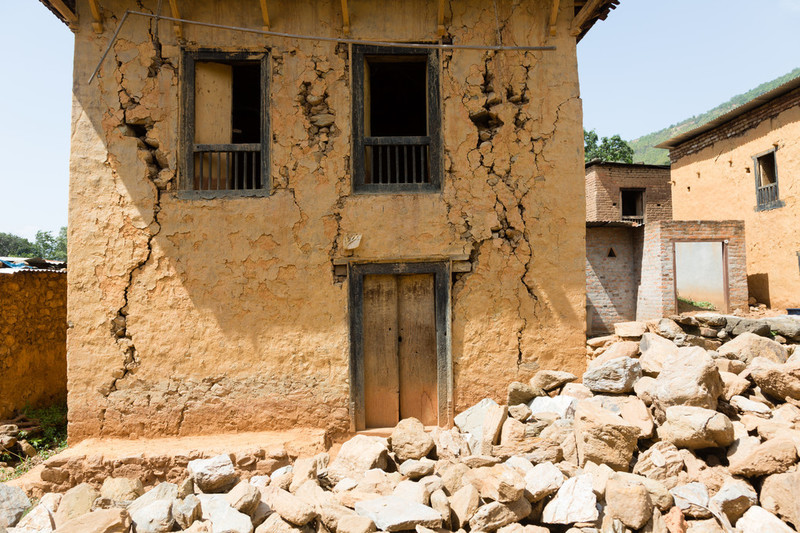
| 25 July 2017
Mobile camps provide emergency services for those unable to return home
Muna Shrestha lives with her husband and two children in Bakultar, a rambling village of mud houses, tea shacks and vegetable, miles off a main road, at the end of a long dirt track in Kavre district, a few hours west of Kathmandu. On the morning of Saturday 25 April 2015, when the earthquake struck, she and her family were cleaning the cowshed. “It was so scary,” she says. “The children were not at home: we were so worried about the children and went looking for them. They were also looking for us.” The days after the earthquake were chaotic. “The schools were closed for a month,” Muna says. “And because all our clothes and possessions were in the ruins, it was difficult to get our things.” Their children were deeply traumatised. “They became scared, and, because of this fear, they wouldn’t eat and they suffered from nausea,” Muna says. As she speaks, she gestures around the family’s old home, at the deep fissures in the mud walls. “This home is cracked by the earthquake. Our family also have another house but that was completely destroyed.” Like many families across Nepal, the Shresthas have been unable to afford to rebuild and make their old home structurally safe. It is a story now ubiquitous across Nepal: a family losing their house and possessions, scarred by trauma, and unable to return home.

| 19 April 2024
Mobile camps provide emergency services for those unable to return home
Muna Shrestha lives with her husband and two children in Bakultar, a rambling village of mud houses, tea shacks and vegetable, miles off a main road, at the end of a long dirt track in Kavre district, a few hours west of Kathmandu. On the morning of Saturday 25 April 2015, when the earthquake struck, she and her family were cleaning the cowshed. “It was so scary,” she says. “The children were not at home: we were so worried about the children and went looking for them. They were also looking for us.” The days after the earthquake were chaotic. “The schools were closed for a month,” Muna says. “And because all our clothes and possessions were in the ruins, it was difficult to get our things.” Their children were deeply traumatised. “They became scared, and, because of this fear, they wouldn’t eat and they suffered from nausea,” Muna says. As she speaks, she gestures around the family’s old home, at the deep fissures in the mud walls. “This home is cracked by the earthquake. Our family also have another house but that was completely destroyed.” Like many families across Nepal, the Shresthas have been unable to afford to rebuild and make their old home structurally safe. It is a story now ubiquitous across Nepal: a family losing their house and possessions, scarred by trauma, and unable to return home.
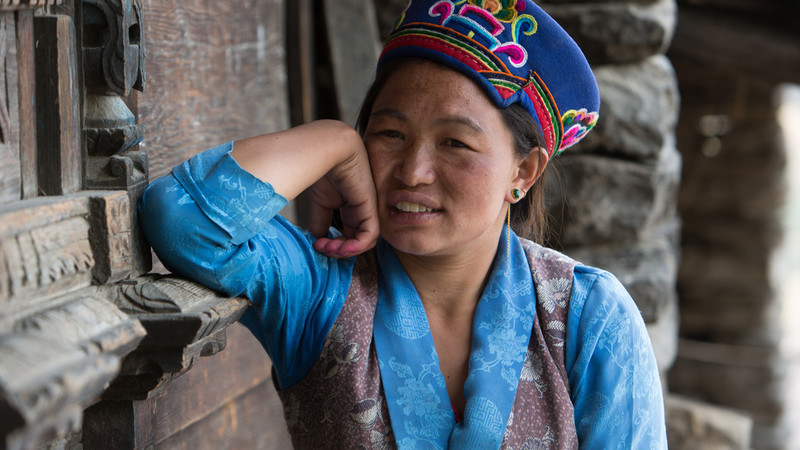
| 25 July 2017
Female volunteers take the lead to deliver life critical health advice after the earthquake
“After the earthquake, there were so many problems. So many homes were destroyed. People are still living in temporary homes because they’re unable to rebuild their homes.” Pasang Tamang lives in Gatlang, high up in the mountains of northern Nepal, 15 kilometres from the Tibetan border. It is a sublimely beautiful village of traditional three-storied houses and Buddhist shrines resting on the slopes of a mountain and thronged by lush potato fields. The 2000 or so people living here are ethnic Tamang, a people of strong cultural traditions, who live across across Nepal but particularly in the lands bordering Tibet. The earthquake of 25 April had a devastating impact on Gatlang. Most of the traditional houses in the heart of the village were damaged or destroyed, and people were forced to move into small shacks of corrugated iron and plastic, where many still live. “Seven people died and three were injured and then later died,” says Pasang. These numbers might seems small compared to some casualty numbers in Nepal, but in a tightknit village like Gatlang, the impact was felt keenly. Hundreds of people were forced into tents. “People suffered badly from the cold,” Pasang says. “Some people caught pneumonia.” At 2240 metres above sea level, nighttime temperatures in Gatlang can plunge. Pregnant women fared particularly badly: “They were unable to access nutritious food or find a warm place. They really suffered.” Pasang herself was badly injured. “During the earthquake, I was asleep in the house because I was ill,” she says. “When I felt the earthquake, I ran out of the house and while I was running I got injured, and my mouth was damaged.” Help was at hand . “After the earthquake, there were so many organisations that came to help, including FPAN,” Pasang says. As well as setting up health camps and providing a range of health care, “they provided family planning devices to people who were in need.” Hundreds of families still live in the corrugated iron and plastic sheds that were erected as a replacement for tents. The government has been slow to distribute funds, and the villagers say that any money they have received falls far short of the cost of rebuilding their old stone homes. Pasang’s house stands empty. “We will not be able to return home because the house is cracked and if there was another earthquake, it would be completely destroyed,” she says. Since the earthquake, she has begun working as a volunteer for FPAN. Her role involves travelling around villages in the area, raising awareness about different contraceptive methods and family planning. Volunteers like Pasang perform a crucial function in a region where literacy levels and a strongly patriarchal culture mean that women marry young and have to get consent from their husbands before using contraception. In this remote community, direct contact with a volunteer who can offer advice and guidance orally, and talk to women about their broader health needs, is absolutely vital.

| 19 April 2024
Female volunteers take the lead to deliver life critical health advice after the earthquake
“After the earthquake, there were so many problems. So many homes were destroyed. People are still living in temporary homes because they’re unable to rebuild their homes.” Pasang Tamang lives in Gatlang, high up in the mountains of northern Nepal, 15 kilometres from the Tibetan border. It is a sublimely beautiful village of traditional three-storied houses and Buddhist shrines resting on the slopes of a mountain and thronged by lush potato fields. The 2000 or so people living here are ethnic Tamang, a people of strong cultural traditions, who live across across Nepal but particularly in the lands bordering Tibet. The earthquake of 25 April had a devastating impact on Gatlang. Most of the traditional houses in the heart of the village were damaged or destroyed, and people were forced to move into small shacks of corrugated iron and plastic, where many still live. “Seven people died and three were injured and then later died,” says Pasang. These numbers might seems small compared to some casualty numbers in Nepal, but in a tightknit village like Gatlang, the impact was felt keenly. Hundreds of people were forced into tents. “People suffered badly from the cold,” Pasang says. “Some people caught pneumonia.” At 2240 metres above sea level, nighttime temperatures in Gatlang can plunge. Pregnant women fared particularly badly: “They were unable to access nutritious food or find a warm place. They really suffered.” Pasang herself was badly injured. “During the earthquake, I was asleep in the house because I was ill,” she says. “When I felt the earthquake, I ran out of the house and while I was running I got injured, and my mouth was damaged.” Help was at hand . “After the earthquake, there were so many organisations that came to help, including FPAN,” Pasang says. As well as setting up health camps and providing a range of health care, “they provided family planning devices to people who were in need.” Hundreds of families still live in the corrugated iron and plastic sheds that were erected as a replacement for tents. The government has been slow to distribute funds, and the villagers say that any money they have received falls far short of the cost of rebuilding their old stone homes. Pasang’s house stands empty. “We will not be able to return home because the house is cracked and if there was another earthquake, it would be completely destroyed,” she says. Since the earthquake, she has begun working as a volunteer for FPAN. Her role involves travelling around villages in the area, raising awareness about different contraceptive methods and family planning. Volunteers like Pasang perform a crucial function in a region where literacy levels and a strongly patriarchal culture mean that women marry young and have to get consent from their husbands before using contraception. In this remote community, direct contact with a volunteer who can offer advice and guidance orally, and talk to women about their broader health needs, is absolutely vital.
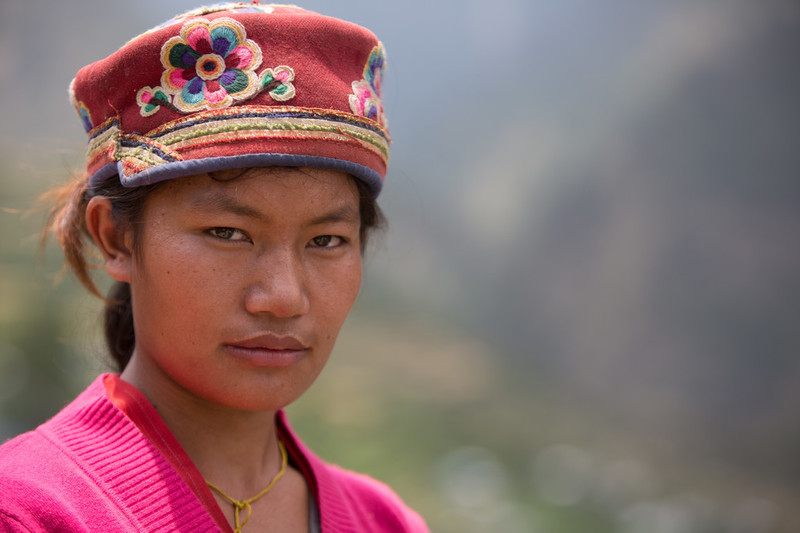
| 25 July 2017
Reproductive health for Nepalese female farmers after the earthquake
Two years after the earthquake that struck Nepal in April 2015, the village of Gatlang in the country’s mountainous north still lies in partial ruin. The houses here are built from enormous slabs of local stone, carved windows and doors, and roofs of stacked wooden planks. They face east towards the rising sun, their facades bedecked in intricate wooden carvings patterns linked to the ancient Buddhist culture of the Tamang people. Today, most of these houses lie in ruin, emptying the heart of the village of people, with most moving to temporary shacks on Gatlang’s fringes. Kopila Tamang is a 24-year-old farmer and mother to two young boys. Her husband, Nakul, works as a lorry driver and is often away. “When the earthquake struck, I was working in the fields,” she says. “If I had been at home, I would have died.” Kopila’s house – or what remains of it – lies at the centre of old Gatlang, on a street of traditional houses that have either entirely collapsed or are uninhabitable due to cracks and structural damage. Piles of stone and wooden cross beams are strewn in what was once a thriving village street. Like many families here, Kopila and her husband and boys have moved into a small shack built from corrugated iron and plastic. This was meant to be a temporary solution, but two years later, they are still living in it, unable to afford the enormous cost of rebuilding their old home. “It needs lots of money,” she says. “I don’t know when we will have the money to build this home again.” FPAN provided emergency health support to families like Kopila’s in the weeks and months after the earthquake. Mobile health camps offered medicines, health check ups, dignity kits, family planning, antenatal checks and other vital services. These days, Kopila gets regular advice from Pasang Tamang, the FPAN reproductive health female volunteer in the village. Kopila had suffered after the birth of her last child. “I didn’t menstruate for eight months, and then after that I started using the [contraceptive] injection,” she says. “But there were some side effects: I started menstruating twice a month.” She then went to a mobile health camp run by FPAN and started using the intrauterine coil. “After that, my menstruation went back to normal,” she says. In a village scarred by the earthquake, access to family planning has brought some much needed stability and relief to Kopila and her small family. “FPAN provide different services and knowledge: I have come to know that having more children can bring suffering, because it’s not enough to just feed children, they must be educated too” she says. “A small family is a happy family.”

| 19 April 2024
Reproductive health for Nepalese female farmers after the earthquake
Two years after the earthquake that struck Nepal in April 2015, the village of Gatlang in the country’s mountainous north still lies in partial ruin. The houses here are built from enormous slabs of local stone, carved windows and doors, and roofs of stacked wooden planks. They face east towards the rising sun, their facades bedecked in intricate wooden carvings patterns linked to the ancient Buddhist culture of the Tamang people. Today, most of these houses lie in ruin, emptying the heart of the village of people, with most moving to temporary shacks on Gatlang’s fringes. Kopila Tamang is a 24-year-old farmer and mother to two young boys. Her husband, Nakul, works as a lorry driver and is often away. “When the earthquake struck, I was working in the fields,” she says. “If I had been at home, I would have died.” Kopila’s house – or what remains of it – lies at the centre of old Gatlang, on a street of traditional houses that have either entirely collapsed or are uninhabitable due to cracks and structural damage. Piles of stone and wooden cross beams are strewn in what was once a thriving village street. Like many families here, Kopila and her husband and boys have moved into a small shack built from corrugated iron and plastic. This was meant to be a temporary solution, but two years later, they are still living in it, unable to afford the enormous cost of rebuilding their old home. “It needs lots of money,” she says. “I don’t know when we will have the money to build this home again.” FPAN provided emergency health support to families like Kopila’s in the weeks and months after the earthquake. Mobile health camps offered medicines, health check ups, dignity kits, family planning, antenatal checks and other vital services. These days, Kopila gets regular advice from Pasang Tamang, the FPAN reproductive health female volunteer in the village. Kopila had suffered after the birth of her last child. “I didn’t menstruate for eight months, and then after that I started using the [contraceptive] injection,” she says. “But there were some side effects: I started menstruating twice a month.” She then went to a mobile health camp run by FPAN and started using the intrauterine coil. “After that, my menstruation went back to normal,” she says. In a village scarred by the earthquake, access to family planning has brought some much needed stability and relief to Kopila and her small family. “FPAN provide different services and knowledge: I have come to know that having more children can bring suffering, because it’s not enough to just feed children, they must be educated too” she says. “A small family is a happy family.”

| 16 November 2017
“I was very happy when my daughter was born”
After three years of marriage, Cambodian garment worker Sineang had started to wonder why she hadn’t yet become pregnant. Still in her early 20s, she and her husband wanted to have a baby and were not using contraception. In late 2011 or early 2012, Sineang visited a Reproductive Health Association of Cambodia clinic to seek treatment after she noticed some vaginal discharge. During the appointment, her doctor asked her more details about her sexual and reproductive health history: the issue of infertility soon came up. “I had been wanting to have a child for three years, since I was married,” she says. “I felt down about myself, but my husband gave me encouragement and told me it was okay that I was not pregnant yet.” During the initial examination, Sineang says, she was tested for cervical cancer as well as other reproductive health issues that can interfere with pregnancy. RHAC staff prescribed medication to treat her fertility problems, which she continued taking until they confirmed she was pregnant. “At first, I wasn’t really convinced that there was any relation between the discharge and not having a baby, but later I started to think that there was a connection,” she says. Throughout the whole period, Sineang went to RHAC each month – switching from infertility treatment to prenatal care – until she gave birth to a baby girl in 2013. “I was very happy when my daughter was born,” she says. “She’s healthy.” At the time, RHAC offered a discount to garment workers, which Sineang says was a big help. It’s no longer on offer, but she is an enthusiastic supporter of a plan RHAC is hoping to implement soon – a partnership with the National Social Security Fund that would allow them to visit RHAC clinics for free through the fund. “It would be really great if they could, because having a baby is expensive,” she says. “The clinic at RHAC has better service than the public hospitals. When I had my first baby, I wanted to have good service, because I had this problem with discharge [in the past].” Sineang, who is originally from Kandal province and works at Dewhirst garment factory in Phnom Penh, said she was pleased to see RHAC midwives doing regular outreach sessions at the factory. “It’s good for women to know more about these issues,” she says. And not only that, but Sineang is also an active ambassador for RHAC, spreading the word about the NGO’s services to friends and colleagues who have also struggled to have a baby. “I referred a friend to RHAC after she saw that I finally got pregnant. Now my friend, who didn’t have a baby, has two children,” she says. “I also referred another colleague who is having the same problem, and she is going to go on Sunday.”

| 19 April 2024
“I was very happy when my daughter was born”
After three years of marriage, Cambodian garment worker Sineang had started to wonder why she hadn’t yet become pregnant. Still in her early 20s, she and her husband wanted to have a baby and were not using contraception. In late 2011 or early 2012, Sineang visited a Reproductive Health Association of Cambodia clinic to seek treatment after she noticed some vaginal discharge. During the appointment, her doctor asked her more details about her sexual and reproductive health history: the issue of infertility soon came up. “I had been wanting to have a child for three years, since I was married,” she says. “I felt down about myself, but my husband gave me encouragement and told me it was okay that I was not pregnant yet.” During the initial examination, Sineang says, she was tested for cervical cancer as well as other reproductive health issues that can interfere with pregnancy. RHAC staff prescribed medication to treat her fertility problems, which she continued taking until they confirmed she was pregnant. “At first, I wasn’t really convinced that there was any relation between the discharge and not having a baby, but later I started to think that there was a connection,” she says. Throughout the whole period, Sineang went to RHAC each month – switching from infertility treatment to prenatal care – until she gave birth to a baby girl in 2013. “I was very happy when my daughter was born,” she says. “She’s healthy.” At the time, RHAC offered a discount to garment workers, which Sineang says was a big help. It’s no longer on offer, but she is an enthusiastic supporter of a plan RHAC is hoping to implement soon – a partnership with the National Social Security Fund that would allow them to visit RHAC clinics for free through the fund. “It would be really great if they could, because having a baby is expensive,” she says. “The clinic at RHAC has better service than the public hospitals. When I had my first baby, I wanted to have good service, because I had this problem with discharge [in the past].” Sineang, who is originally from Kandal province and works at Dewhirst garment factory in Phnom Penh, said she was pleased to see RHAC midwives doing regular outreach sessions at the factory. “It’s good for women to know more about these issues,” she says. And not only that, but Sineang is also an active ambassador for RHAC, spreading the word about the NGO’s services to friends and colleagues who have also struggled to have a baby. “I referred a friend to RHAC after she saw that I finally got pregnant. Now my friend, who didn’t have a baby, has two children,” she says. “I also referred another colleague who is having the same problem, and she is going to go on Sunday.”

| 24 August 2017
"One pregnant woman was delivering at this time, so she had to go on a boat to dry land"
Incessant rains across Sri Lanka during May 2017 affected over half a million people in seven districts. Most affected was the Ratnapura district where over 20,000 people faced flash floods, and where 46 deaths were reported. IPPF Humanitarian, in partnership with FPA Sri Lanka, responded to this catastrophe through the distribution of over 700 dignity kits in Ratnapura Dr. Rohan Jayasuriya and midwife Chaturika Lakmale were on the ground during and after the floods providing family planning services and contraception to women affected by the disaster. “When the floods came our clinic was located on higher ground, so it wasn’t damaged. The floods finished on the 31 May 2017, and we reopened one day later on the 1 June 2017. After the floods, we arranged several special clinics just for family planning, and distributed condoms and emergency supplies of the pill to camps in case women missed their regular form of contraception like injectables, implants or IUDs. In Sri Lanka, approximately 67% of couples use family planning, 26% of which prefer IUDs” We offered condoms and emergency supply of the pill. We told women to keep one packet of the pill in their handbag, and one in their home, should they ever have to run quickly in an emergency. One pregnant woman was delivering at this time, so she had to go on a boat to dry land, and then onwards in a vehicle to the hospital. Once we reopened the clinic, two of our own midwives were unable to attend work as the floods had affected them, but I was here. It was so busy.” Stories Read more stories from Sri Lanka

| 19 April 2024
"One pregnant woman was delivering at this time, so she had to go on a boat to dry land"
Incessant rains across Sri Lanka during May 2017 affected over half a million people in seven districts. Most affected was the Ratnapura district where over 20,000 people faced flash floods, and where 46 deaths were reported. IPPF Humanitarian, in partnership with FPA Sri Lanka, responded to this catastrophe through the distribution of over 700 dignity kits in Ratnapura Dr. Rohan Jayasuriya and midwife Chaturika Lakmale were on the ground during and after the floods providing family planning services and contraception to women affected by the disaster. “When the floods came our clinic was located on higher ground, so it wasn’t damaged. The floods finished on the 31 May 2017, and we reopened one day later on the 1 June 2017. After the floods, we arranged several special clinics just for family planning, and distributed condoms and emergency supplies of the pill to camps in case women missed their regular form of contraception like injectables, implants or IUDs. In Sri Lanka, approximately 67% of couples use family planning, 26% of which prefer IUDs” We offered condoms and emergency supply of the pill. We told women to keep one packet of the pill in their handbag, and one in their home, should they ever have to run quickly in an emergency. One pregnant woman was delivering at this time, so she had to go on a boat to dry land, and then onwards in a vehicle to the hospital. Once we reopened the clinic, two of our own midwives were unable to attend work as the floods had affected them, but I was here. It was so busy.” Stories Read more stories from Sri Lanka

| 24 August 2017
"I looked up and saw trees falling near my neighbour’s house up the hill. My neighbours died"
Incessant rains across Sri Lanka during May 2017 affected over half a million people in seven districts. Most affected was the Ratnapura district where over 20,000 people faced flash floods. “When the flood came, my husband was feeding my eldest child and the baby was asleep in the bed. I was outside of the house. My mother was brushing her teeth outside the back of the house. I looked up and saw trees falling near my neighbour’s house up the hill. My neighbours died. I couldn’t take any possessions – I just had to run for my life. My husband took my younger child. They were all screaming. Since then, I have had my children checked here in the Ministry of Health clinic; their weight, height and nutrition. We had two houses on the one block of land, but we will only get compensation for one house. We can’t live in a tent with a baby so are currently renting a house with our own money, but for a while my mother and father slept in this clinic.” Stories Read more stories from Sri Lanka

| 19 April 2024
"I looked up and saw trees falling near my neighbour’s house up the hill. My neighbours died"
Incessant rains across Sri Lanka during May 2017 affected over half a million people in seven districts. Most affected was the Ratnapura district where over 20,000 people faced flash floods. “When the flood came, my husband was feeding my eldest child and the baby was asleep in the bed. I was outside of the house. My mother was brushing her teeth outside the back of the house. I looked up and saw trees falling near my neighbour’s house up the hill. My neighbours died. I couldn’t take any possessions – I just had to run for my life. My husband took my younger child. They were all screaming. Since then, I have had my children checked here in the Ministry of Health clinic; their weight, height and nutrition. We had two houses on the one block of land, but we will only get compensation for one house. We can’t live in a tent with a baby so are currently renting a house with our own money, but for a while my mother and father slept in this clinic.” Stories Read more stories from Sri Lanka

| 25 July 2017
Mobile camps provide emergency services for those unable to return home
Muna Shrestha lives with her husband and two children in Bakultar, a rambling village of mud houses, tea shacks and vegetable, miles off a main road, at the end of a long dirt track in Kavre district, a few hours west of Kathmandu. On the morning of Saturday 25 April 2015, when the earthquake struck, she and her family were cleaning the cowshed. “It was so scary,” she says. “The children were not at home: we were so worried about the children and went looking for them. They were also looking for us.” The days after the earthquake were chaotic. “The schools were closed for a month,” Muna says. “And because all our clothes and possessions were in the ruins, it was difficult to get our things.” Their children were deeply traumatised. “They became scared, and, because of this fear, they wouldn’t eat and they suffered from nausea,” Muna says. As she speaks, she gestures around the family’s old home, at the deep fissures in the mud walls. “This home is cracked by the earthquake. Our family also have another house but that was completely destroyed.” Like many families across Nepal, the Shresthas have been unable to afford to rebuild and make their old home structurally safe. It is a story now ubiquitous across Nepal: a family losing their house and possessions, scarred by trauma, and unable to return home.

| 19 April 2024
Mobile camps provide emergency services for those unable to return home
Muna Shrestha lives with her husband and two children in Bakultar, a rambling village of mud houses, tea shacks and vegetable, miles off a main road, at the end of a long dirt track in Kavre district, a few hours west of Kathmandu. On the morning of Saturday 25 April 2015, when the earthquake struck, she and her family were cleaning the cowshed. “It was so scary,” she says. “The children were not at home: we were so worried about the children and went looking for them. They were also looking for us.” The days after the earthquake were chaotic. “The schools were closed for a month,” Muna says. “And because all our clothes and possessions were in the ruins, it was difficult to get our things.” Their children were deeply traumatised. “They became scared, and, because of this fear, they wouldn’t eat and they suffered from nausea,” Muna says. As she speaks, she gestures around the family’s old home, at the deep fissures in the mud walls. “This home is cracked by the earthquake. Our family also have another house but that was completely destroyed.” Like many families across Nepal, the Shresthas have been unable to afford to rebuild and make their old home structurally safe. It is a story now ubiquitous across Nepal: a family losing their house and possessions, scarred by trauma, and unable to return home.

| 25 July 2017
Female volunteers take the lead to deliver life critical health advice after the earthquake
“After the earthquake, there were so many problems. So many homes were destroyed. People are still living in temporary homes because they’re unable to rebuild their homes.” Pasang Tamang lives in Gatlang, high up in the mountains of northern Nepal, 15 kilometres from the Tibetan border. It is a sublimely beautiful village of traditional three-storied houses and Buddhist shrines resting on the slopes of a mountain and thronged by lush potato fields. The 2000 or so people living here are ethnic Tamang, a people of strong cultural traditions, who live across across Nepal but particularly in the lands bordering Tibet. The earthquake of 25 April had a devastating impact on Gatlang. Most of the traditional houses in the heart of the village were damaged or destroyed, and people were forced to move into small shacks of corrugated iron and plastic, where many still live. “Seven people died and three were injured and then later died,” says Pasang. These numbers might seems small compared to some casualty numbers in Nepal, but in a tightknit village like Gatlang, the impact was felt keenly. Hundreds of people were forced into tents. “People suffered badly from the cold,” Pasang says. “Some people caught pneumonia.” At 2240 metres above sea level, nighttime temperatures in Gatlang can plunge. Pregnant women fared particularly badly: “They were unable to access nutritious food or find a warm place. They really suffered.” Pasang herself was badly injured. “During the earthquake, I was asleep in the house because I was ill,” she says. “When I felt the earthquake, I ran out of the house and while I was running I got injured, and my mouth was damaged.” Help was at hand . “After the earthquake, there were so many organisations that came to help, including FPAN,” Pasang says. As well as setting up health camps and providing a range of health care, “they provided family planning devices to people who were in need.” Hundreds of families still live in the corrugated iron and plastic sheds that were erected as a replacement for tents. The government has been slow to distribute funds, and the villagers say that any money they have received falls far short of the cost of rebuilding their old stone homes. Pasang’s house stands empty. “We will not be able to return home because the house is cracked and if there was another earthquake, it would be completely destroyed,” she says. Since the earthquake, she has begun working as a volunteer for FPAN. Her role involves travelling around villages in the area, raising awareness about different contraceptive methods and family planning. Volunteers like Pasang perform a crucial function in a region where literacy levels and a strongly patriarchal culture mean that women marry young and have to get consent from their husbands before using contraception. In this remote community, direct contact with a volunteer who can offer advice and guidance orally, and talk to women about their broader health needs, is absolutely vital.

| 19 April 2024
Female volunteers take the lead to deliver life critical health advice after the earthquake
“After the earthquake, there were so many problems. So many homes were destroyed. People are still living in temporary homes because they’re unable to rebuild their homes.” Pasang Tamang lives in Gatlang, high up in the mountains of northern Nepal, 15 kilometres from the Tibetan border. It is a sublimely beautiful village of traditional three-storied houses and Buddhist shrines resting on the slopes of a mountain and thronged by lush potato fields. The 2000 or so people living here are ethnic Tamang, a people of strong cultural traditions, who live across across Nepal but particularly in the lands bordering Tibet. The earthquake of 25 April had a devastating impact on Gatlang. Most of the traditional houses in the heart of the village were damaged or destroyed, and people were forced to move into small shacks of corrugated iron and plastic, where many still live. “Seven people died and three were injured and then later died,” says Pasang. These numbers might seems small compared to some casualty numbers in Nepal, but in a tightknit village like Gatlang, the impact was felt keenly. Hundreds of people were forced into tents. “People suffered badly from the cold,” Pasang says. “Some people caught pneumonia.” At 2240 metres above sea level, nighttime temperatures in Gatlang can plunge. Pregnant women fared particularly badly: “They were unable to access nutritious food or find a warm place. They really suffered.” Pasang herself was badly injured. “During the earthquake, I was asleep in the house because I was ill,” she says. “When I felt the earthquake, I ran out of the house and while I was running I got injured, and my mouth was damaged.” Help was at hand . “After the earthquake, there were so many organisations that came to help, including FPAN,” Pasang says. As well as setting up health camps and providing a range of health care, “they provided family planning devices to people who were in need.” Hundreds of families still live in the corrugated iron and plastic sheds that were erected as a replacement for tents. The government has been slow to distribute funds, and the villagers say that any money they have received falls far short of the cost of rebuilding their old stone homes. Pasang’s house stands empty. “We will not be able to return home because the house is cracked and if there was another earthquake, it would be completely destroyed,” she says. Since the earthquake, she has begun working as a volunteer for FPAN. Her role involves travelling around villages in the area, raising awareness about different contraceptive methods and family planning. Volunteers like Pasang perform a crucial function in a region where literacy levels and a strongly patriarchal culture mean that women marry young and have to get consent from their husbands before using contraception. In this remote community, direct contact with a volunteer who can offer advice and guidance orally, and talk to women about their broader health needs, is absolutely vital.

| 25 July 2017
Reproductive health for Nepalese female farmers after the earthquake
Two years after the earthquake that struck Nepal in April 2015, the village of Gatlang in the country’s mountainous north still lies in partial ruin. The houses here are built from enormous slabs of local stone, carved windows and doors, and roofs of stacked wooden planks. They face east towards the rising sun, their facades bedecked in intricate wooden carvings patterns linked to the ancient Buddhist culture of the Tamang people. Today, most of these houses lie in ruin, emptying the heart of the village of people, with most moving to temporary shacks on Gatlang’s fringes. Kopila Tamang is a 24-year-old farmer and mother to two young boys. Her husband, Nakul, works as a lorry driver and is often away. “When the earthquake struck, I was working in the fields,” she says. “If I had been at home, I would have died.” Kopila’s house – or what remains of it – lies at the centre of old Gatlang, on a street of traditional houses that have either entirely collapsed or are uninhabitable due to cracks and structural damage. Piles of stone and wooden cross beams are strewn in what was once a thriving village street. Like many families here, Kopila and her husband and boys have moved into a small shack built from corrugated iron and plastic. This was meant to be a temporary solution, but two years later, they are still living in it, unable to afford the enormous cost of rebuilding their old home. “It needs lots of money,” she says. “I don’t know when we will have the money to build this home again.” FPAN provided emergency health support to families like Kopila’s in the weeks and months after the earthquake. Mobile health camps offered medicines, health check ups, dignity kits, family planning, antenatal checks and other vital services. These days, Kopila gets regular advice from Pasang Tamang, the FPAN reproductive health female volunteer in the village. Kopila had suffered after the birth of her last child. “I didn’t menstruate for eight months, and then after that I started using the [contraceptive] injection,” she says. “But there were some side effects: I started menstruating twice a month.” She then went to a mobile health camp run by FPAN and started using the intrauterine coil. “After that, my menstruation went back to normal,” she says. In a village scarred by the earthquake, access to family planning has brought some much needed stability and relief to Kopila and her small family. “FPAN provide different services and knowledge: I have come to know that having more children can bring suffering, because it’s not enough to just feed children, they must be educated too” she says. “A small family is a happy family.”

| 19 April 2024
Reproductive health for Nepalese female farmers after the earthquake
Two years after the earthquake that struck Nepal in April 2015, the village of Gatlang in the country’s mountainous north still lies in partial ruin. The houses here are built from enormous slabs of local stone, carved windows and doors, and roofs of stacked wooden planks. They face east towards the rising sun, their facades bedecked in intricate wooden carvings patterns linked to the ancient Buddhist culture of the Tamang people. Today, most of these houses lie in ruin, emptying the heart of the village of people, with most moving to temporary shacks on Gatlang’s fringes. Kopila Tamang is a 24-year-old farmer and mother to two young boys. Her husband, Nakul, works as a lorry driver and is often away. “When the earthquake struck, I was working in the fields,” she says. “If I had been at home, I would have died.” Kopila’s house – or what remains of it – lies at the centre of old Gatlang, on a street of traditional houses that have either entirely collapsed or are uninhabitable due to cracks and structural damage. Piles of stone and wooden cross beams are strewn in what was once a thriving village street. Like many families here, Kopila and her husband and boys have moved into a small shack built from corrugated iron and plastic. This was meant to be a temporary solution, but two years later, they are still living in it, unable to afford the enormous cost of rebuilding their old home. “It needs lots of money,” she says. “I don’t know when we will have the money to build this home again.” FPAN provided emergency health support to families like Kopila’s in the weeks and months after the earthquake. Mobile health camps offered medicines, health check ups, dignity kits, family planning, antenatal checks and other vital services. These days, Kopila gets regular advice from Pasang Tamang, the FPAN reproductive health female volunteer in the village. Kopila had suffered after the birth of her last child. “I didn’t menstruate for eight months, and then after that I started using the [contraceptive] injection,” she says. “But there were some side effects: I started menstruating twice a month.” She then went to a mobile health camp run by FPAN and started using the intrauterine coil. “After that, my menstruation went back to normal,” she says. In a village scarred by the earthquake, access to family planning has brought some much needed stability and relief to Kopila and her small family. “FPAN provide different services and knowledge: I have come to know that having more children can bring suffering, because it’s not enough to just feed children, they must be educated too” she says. “A small family is a happy family.”







